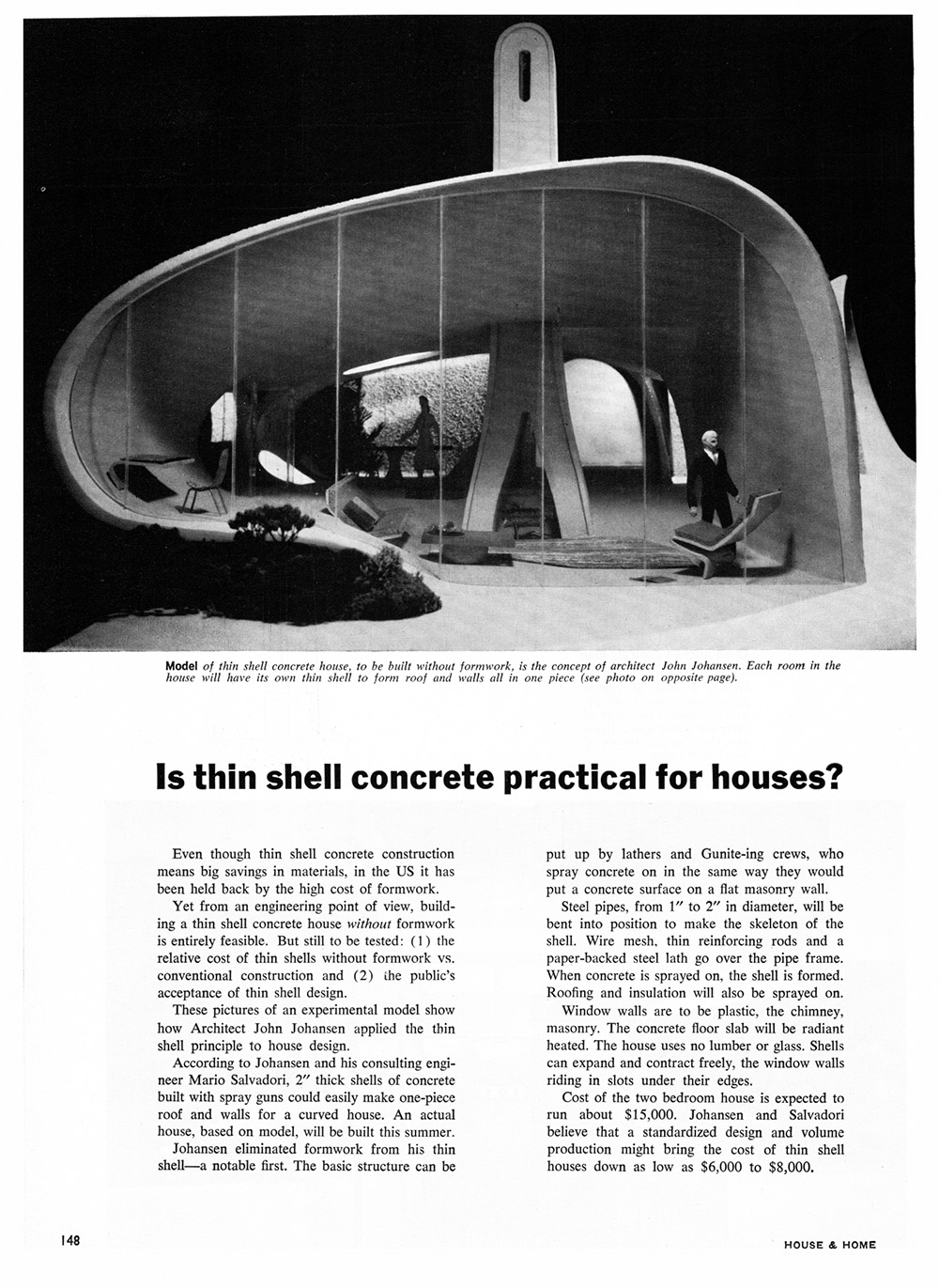


Model of thin shell concrete house, to be built without formwork, is the concept of architect John Johansen. Each room in the house will have its own thin shell to form roof and walls all in one piece (see photo on opposite page).
Is thin shell concrete practical for houses?
Even though thin shell concrete construction means big savings in materials, in the US it has been held back by the high cost of formwork.
Yet from an engineering point of view, building a thin shell concrete house without formwork is entirely feasible. But still to be tested: (1) the relative cost of thin shells without formwork vs. conventional construction and (2) the public's acceptance of thin shell design.
These pictures of an experimental model show how Architect John Johansen applied the thin shell principle to house design.
According to Johansen and his consulting engineer Mario Salvadori, 2" thick shells of concrete built with spray guns could easily make one-piece roof and walls for a curved house. An actual house, based on model, will be built this summer.
Johansen eliminated formwork from his thin shell a notable first. The basic structure can be
put up by lathers and Gunite-ing crews, who spray concrete on in the same way they would put a concrete surface on a flat masonry wall.
Steel pipes, from l" to 2" in diameter, will be bent into position to make the skeleton of the shell. Wire mesh, thin reinforcing rods and a paper-backed steel lath go over the pipe frame. When concrete is sprayed on, the shell is formed. Roofing and insulation will also be sprayed on.
Window walls are to be plastic, the chimney, masonry. The concrete floor slab will be radiant heated. The house uses no lumber or glass. Shells can expand and contract freely, the window walls riding in slots under their edges.
Cost of the two bedroom house is expected to run about $15,000. Johansen and Salvadori believe that a standardized design and volume production might bring the cost of thin shell houses down as low as $6,000 to $8,000.